What's New
Displaying results 3711 - 3720 of 4914
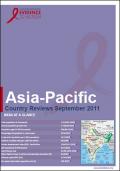
Resource | Reviews and Snapshots,
The first cases of HIV were diagnosed among sex workers in Chennai in 1986. Since then, the country has evolved from a "low" to "concentrated" epidemic; the national HIV prevalence has steadily grown, not only among key affected populations such as men who have sex with men (MSM), sex workers and injecting drug users (IDUs), but also spreading into the general population in several states.

Resource | Publications,
The Viet Nam Multiple Indicator Cluster Survey (MICS 2011) was conducted from December 2010 to January 2011 by the General Statistics Office of Viet Nam, in collaboration with the Ministry of Health (MOH) and the Ministry of Labour, Invalids and Social Affairs (MOLISA). Financial and technical support for the survey was provided by the United Nations Children’s Fund (UNICEF) and financial support was provided by the United Nations Population Fund (UNFPA) in Viet Nam.

Resource | Publications,
The Philippines, while seemingly fortunate in thus far being able to avert a full-blown HIV/AIDS epidemic, remains at risk for this potentially disastrous possibility. On both the policy and program fronts, strategic areas have been identified to better focus the various sector-specific prevention and control activities. Nonetheless, if recent and current financing and allocation patterns are any measure, the reality may be far from the drawing board ideal. The current HIV/AIDS financing backbone will thus have to be streamlined and made more efficient and effective.
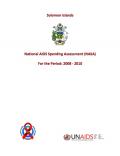
Resource | Publications,
In 2011, the Government of Solomon Islands committed to undertake a comprehensive National AIDS Spending Assessment (NASA) of HIV and AIDS expenditure in Solomon Islands.
This report is the result of a spending assessment exercise that was extensive, expansive and rigorous. It was coordinated by Solomon Islands National AIDS Commission (SINAC) in collaboration with UNAIDS and stakeholders involved in the response to HIV and AIDS.

Resource | Publications,
This pilot project was the first of its kind in the country. It has brought different stakeholders together and used their strengths to develop a comprehensive response to HIV and AIDS. The capacities built locally will help in scaling up the interventions.
Overall, the project was successful in achieving most of its desired outcomes. It has provided some valuable lessons and learnings regarding the implementation of HIV and AIDS prevention programmes in the country. Learnings from the project needs to be incorporated in the next steps, to ensure that the programme increases its efficiency and effectiveness.
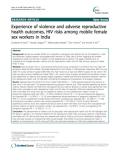
Resource | Publications,
Female sex workers (FSWs) are a population sub-group most affected by the HIV epidemic in India and elsewhere. Despite research and programmatic attention to FSWs, little is known regarding sex workers’ reproductive health and HIV risk in relation to their experiences of violence. This paper therefore aims to understand the linkages between violence and the reproductive health and HIV risks among a group of mobile FSWs in India.
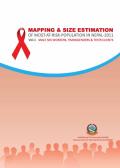
Resource | Publications,
This report presents the data and key findings emerging through the mapping and size estimation exercise of the male sex worker, transgender and their clients (MTCs). The mapping and size estimation exercise included the following three groups: male sex workers (MSWs), transgenders (TGs), men having sex with men (MSM) and clients of TGs and MSWs.
The specific aims of the mapping and size estimation exercise were firstly, developing comprehensive maps of MTC sites; secondly, estimating the size of MTCs at district and national levels; and thirdly, studying MTC behavioural and background characteristics.
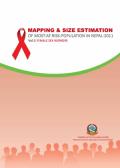
Resource | Publications,
This report presents the data and key findings emerging through the mapping and size estimation exercise of the female sex workers (FSWs). FSWs in the mapping and size estimation exercise included the following groups: establishment-based FSWs, street-based FSWs and home-based FSWs.
The specific aims of the mapping and size estimation exercise were firstly, developing comprehensive maps of FSWs’ sites; secondly, estimating the size of FSWs at district and national levels; and thirdly, studying FSW behavioural and background characteristics.

Resource | Publications,
Despite the increasing number of studies being conducted on violence against young married women elsewhere, this subject has received little attention from researchers and policy makers in Nepal. This paper assesses the prevalence of violence among young married women in rural Nepal. Specifically, it examines women’s status in order to better understand the risk of violence. A cross-sectional study was conducted in 2009 among 1,296 young married women aged 15-24 years in four major ethnic groups.

Resource | Publications,
The present situation in Timor Leste can only be understood in the historical and cultural context of prior political subjugations. Gender violence is a domestic and community reality in Timor-Leste. This paper gives an in-depth analysis of the domestic violence (DV) and sexual and gender-based violence (SGBV) outstanding issues, challenges, development and prospects. For the world's newest nation, much progress has been made in legislation promulgated since the restoration of independence in 2002. Now the need is for these various platforms of action to be pervasively socialised with all the citizens of Timor-Leste and for sustainable funding to be made available to achieve these goal. Despite these problems Timorese women have been granted legal empowerment and so been given hope for a better life.





